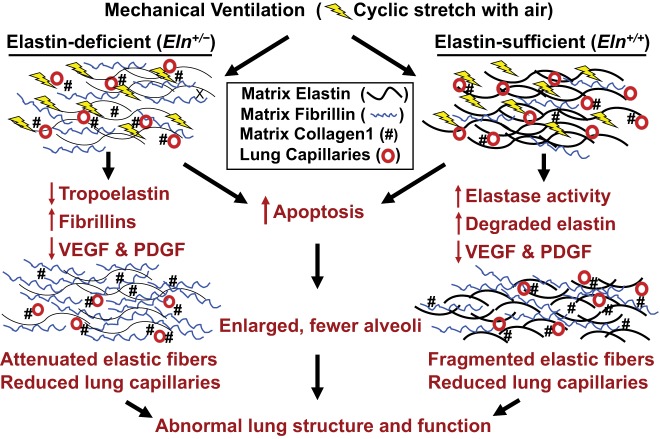Fig. 13.
A working model depicting how MV leads to impaired formation of alveoli and lung capillaries and evokes ECM remodeling in Eln+/− and Eln+/+ newborn mice. Under basal conditions, the lungs of Eln+/− pups, compared with Eln+/+ littermates, bear attenuated elastic fibers and increased collagen-1 that is especially notable around small blood vessels, which feed a reduced number of pulmonary capillaries. Prolonged MV elicits increased lung elastase activity and thereby increases elastin degradation, leading to fragmented elastic fibers in Eln+/+ pups. In contrast, MV causes no significant increase of lung elastase activity in Eln+/− mice, but elastin synthesis is further reduced, whereas fibrillin production is increased in response to MV. Lung abundance of two key growth factors, VEGF and PDGF, is decreased in both Eln+/+ and Eln+/− mice after lengthy MV, and these changes are associated with increased apoptosis that has been linked to prolonged cyclic stretch of epithelial and endothelial cells, as well as lung fibroblasts. Taken together, the adverse effects of lengthy MV yield reduced numbers of lung capillaries, fewer alveoli, and remodeling of the ECM, resulting in diminished lung growth and abnormal lung function.

